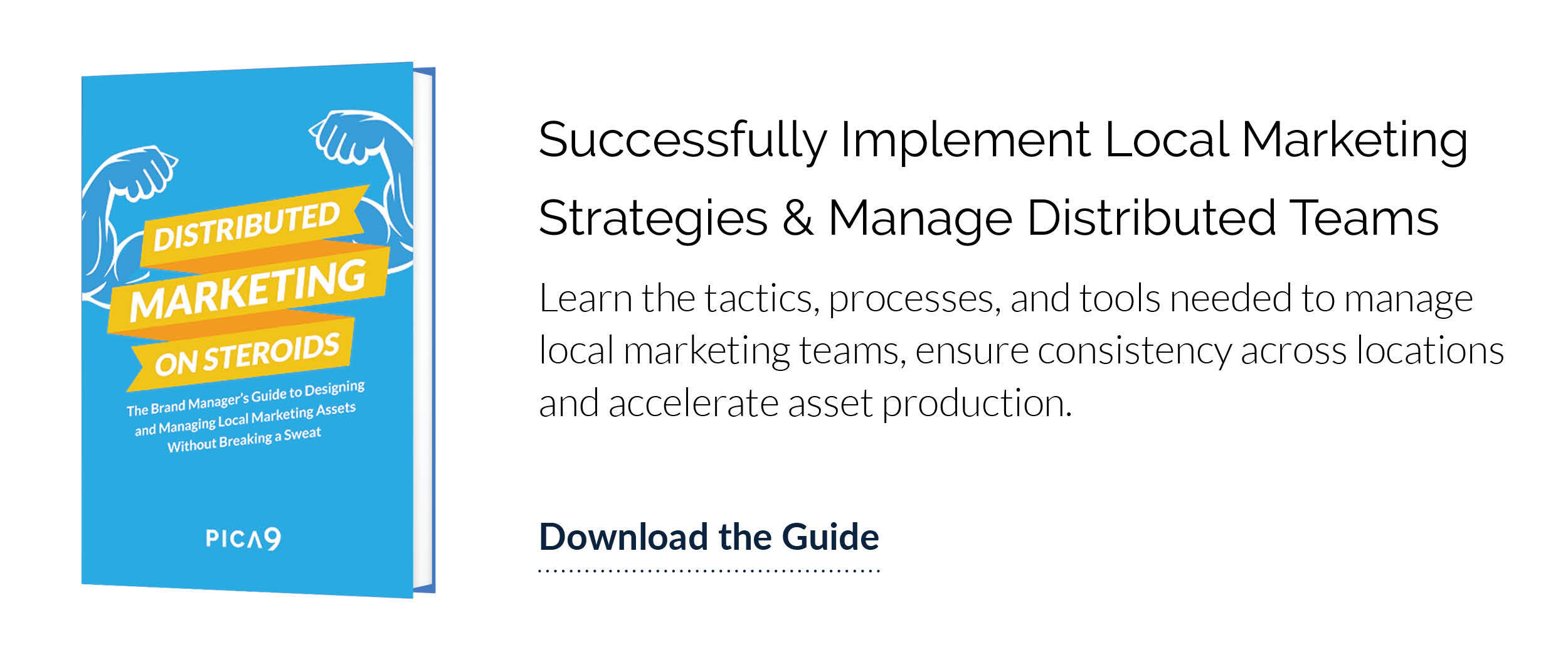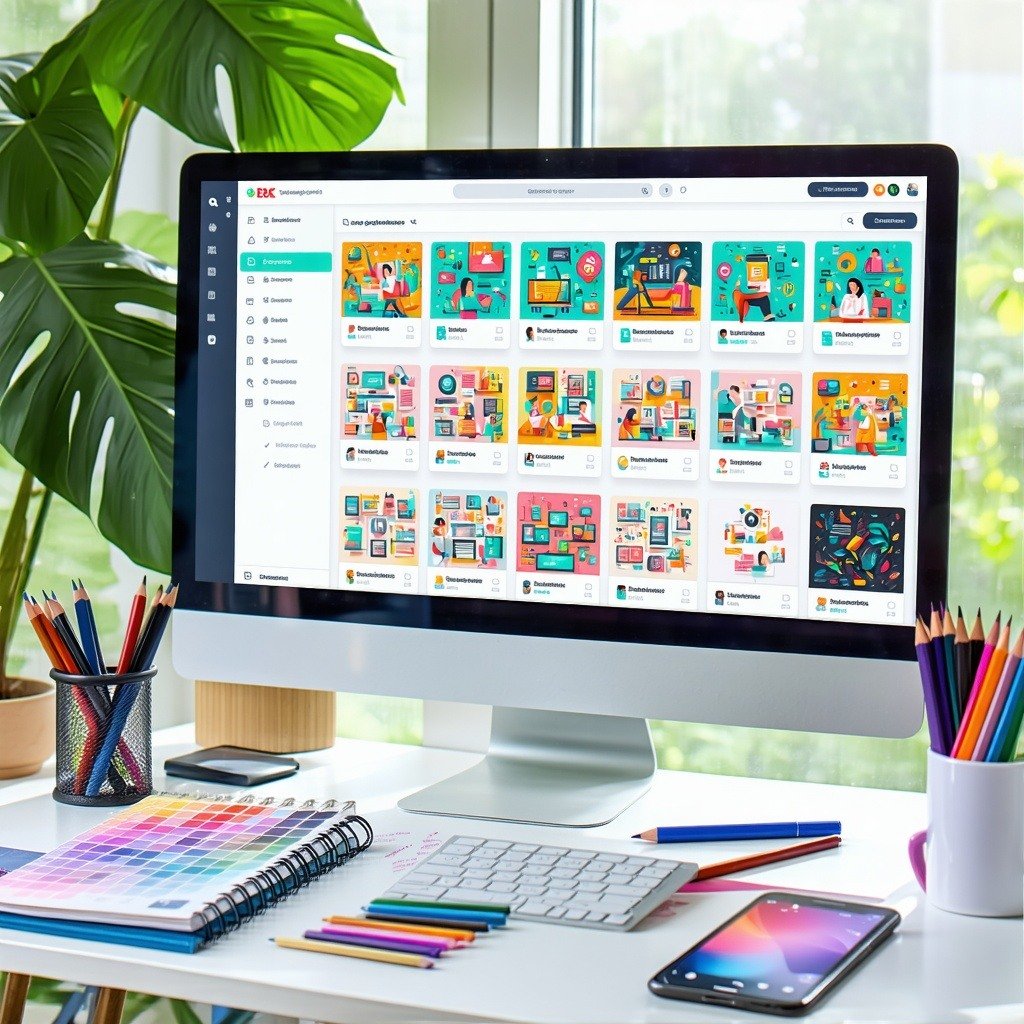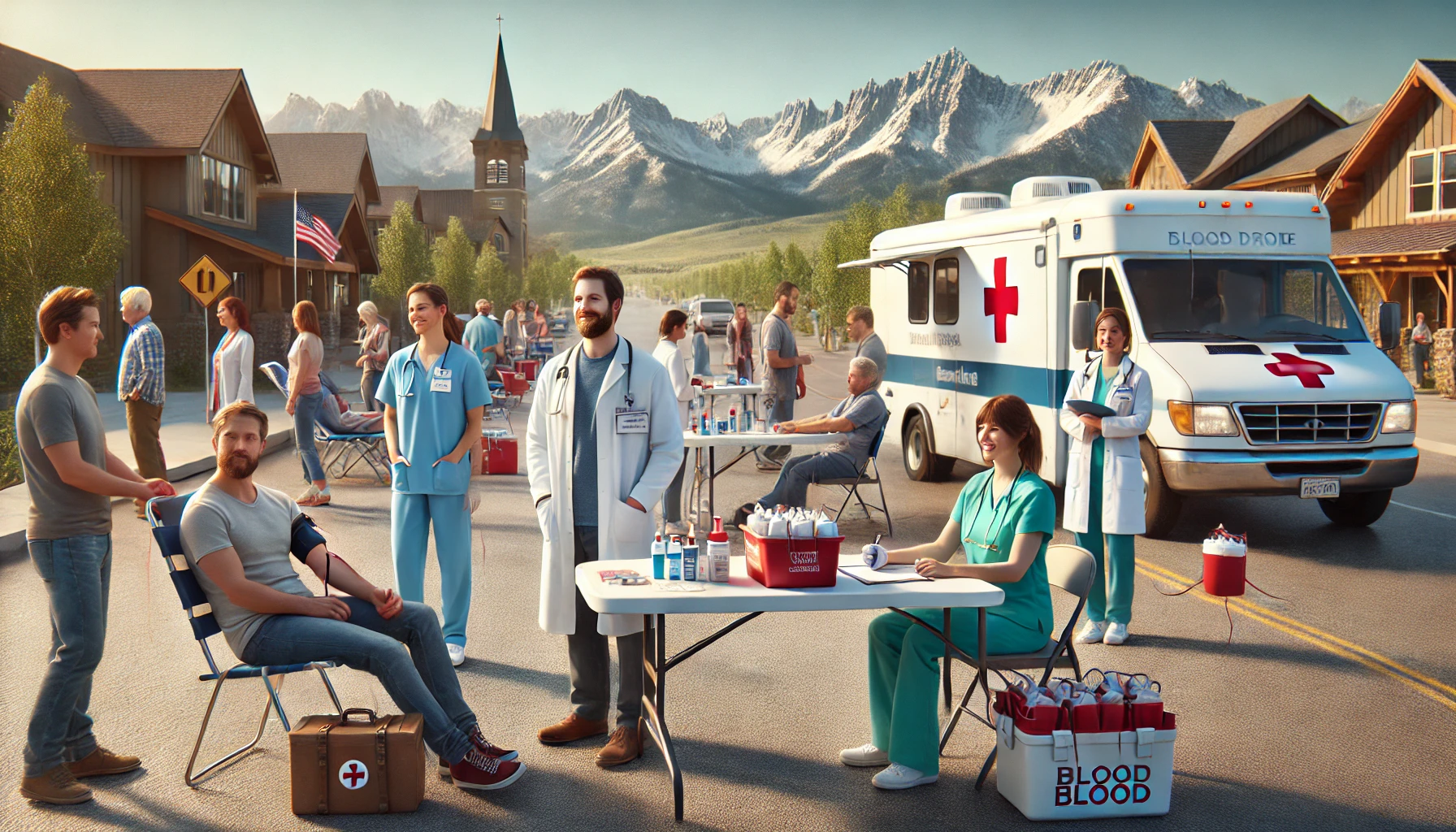Successful local marketing requires a lot more than just getting your campaigns out the door and onto billboards or in-store signage. Local marketing needs to “feel” authentic to your local customers. Your local affiliates have to execute on your brand promise in order to turn first-time buyers into loyal customers. Even if a brand has two fast food franchises in the same small town that are owned by different franchisees, the customers in town should never know there's a difference between the two locations.
As a brand manager, your primary goal is to make your local marketers as successful as possible. You need them to fuel what Gartner calls their “Demand-Generation Center,” to bring new customers through the door. Local marketing success occurs when a distributed brand manager figures out the right balance of free reign and control. Most brands fall somewhere in the middle of the two ends of the control-freedom spectrum, with locals choosing to “do it myself” at times, and the brand management team “doing it for them” the rest of the time.
What’s the difference between local marketing for local outlets, and local marketing for brand managers? What are the tools, campaigns, and tactics used by the world’s most effective distributed brands?
To help navigate the challenging world of local marketing, read on.
3 Myths About Local Marketing Strategy
While locals may have varying degrees of freedom or compliance requirements, a lot of friction in distributed organizations comes from simple misunderstanding of who’s really in charge of the local marketing strategy.
Below are three common misconceptions about the strategy for local marketing that can trip up distributed brand managers and local marketers alike:
#1: Brand managers are responsible for successful local marketing.
While brand managers can guide local marketers in the direction of success, ultimately, the local team is responsible for their own outcomes. Even if they don’t have the most sophisticated marketing skills, they’re constantly engaged in creating a strategy to connect with their customers. As a brand manager, your job is to give them what they need to succeed. Are your automotive dealers in rural markets using direct mail campaigns to get them through the slow months? Do your urban restaurant franchisees book reservations with email marketing? As a brand manager, your job is to take the knowledge of what marketing your locals are doing and help them improve their processes to generate better results.
#2: Local marketers don't follow strategy.
You can tell your local affiliates are on track with the brand strategy when they successfully use head office provided assets for local marketing. As a brand manager, you know you’ve got your campaigns, templates, and tools in order if it’s easy for your local outlets to follow your strategy. When local marketers find it difficult to launch new campaigns, and tedious to understand the process the brand wants them to follow, compliance decreases. In terms of strategy, brand managers should enable local marketers with new campaigns, assets and templates that make it easy for them to remain compliant with brand guidelines.
#3: Brand managers do national strategy, local marketers do local strategy.
As a brand manager, a big chunk of your job may include overseeing the implementation of national campaigns. But you should also be looking at the bigger picture - how the national campaign relates to your local outlets' needs. Evaluate the marketing that your local teams implement, and how it works for them. Your role is to identify where the brand can add resources, which may include more marketing assets, more templates or additional training. While a local outlet may be in control of their overall marketing efforts, your job is to align those efforts with the brand messaging and image.
The Brand Manager's Role in Local Marketing
If brand managers or local outlets try to make a run at local marketing all on their own, they’ll probably crash and burn. Successful local marketing needs collaboration.
Entrepreneur's Mark Siebert writes that brand managers should essentially be consultants. They should help locals execute amazing campaigns "based on observation, comparative analysis, and the use of key performance indicators.”
Let the marketing activities, and assets used by your local marketers, dictate what you do to support their success. Enable your locals with training, handbooks, workshops and well-crafted campaign assets, that will help them become better at marketing in general.
The Essential Local Marketing Campaigns
Providing marketing materials that your local outlets can tweak and edit easily, allows them to create branded marketing around key holidays, sales, events and other special offers. An effective campaign that drives results is going to look quite different for a distributed brand in the fast-and-casual dining industry than a distributed brand in luxury automotive. Brand managers and locals should understand the marketing channels that are most effective, and the medium that resonates with their target audience, to boost results.
In general terms, local marketers in every industry are fond of “win-back” campaigns and other targeted promotions that drive customer loyalty. Another favorite is taking national campaign materials and adding a local twist. Referring to local events, sports teams, or other relevant localized information can make marketing feel more authentic to local customers.
Tools for Brand Manager - Local Marketer Collaboration
Local marketers need tools for execution. Brand managers need to see what locals are doing. You can't visit every store to coach local marketers one on one. You need to audit their marketing from a distance.
How can brands achieve this remotely?
Local marketers could execute changes to campaign materials through Adobe Creative Cloud, but any graphic designer can attest this has a steep learning curve. You could also try to put materials into programs they already know how to use, like Microsoft Word. But have you every tried to format text boxes in Word? It can really be difficult and messy. For web to print, some print vendors offer website forms for conveniently ordering signage and swag; however, the back and forth revisions are time consuming.
In terms of oversight, brand managers could use a survey tool like SurveyMonkey, or a website form to ask their local marketers for feedback. However, this kind of feedback skews to the extremes, and those highly negative and highly positive responses are likely to distract away from the mean that gets hidden in between. Additionally, brand managers could attempt to scout out compliance by using Google Maps street view and trying to zoom in on storefronts... but this takes hours of intense searching, and the Google Streetview Car only comes around every three years or so.
Sounds difficult, right?
The easiest way to achieve a streamlined process between head office and local outlets is through local marketing automation software. If you can find one tool that helps them do it easily, quickly, and painlessly, local marketers are going to want to use it.
With local marketing automation tools, designed to help your locals execute, both head office and local teams win. Your locals gain what they want: an easy way to do really great marketing in record time. Brand managers gain happier, more compliant franchisees and quick visibility into local marketing activities.
Dig deeper, read 3 Reasons Brand Managers Need SaaS Local Marketing Automation
What Templates Should Brand Managers Prioritize?
With distributed marketing software like local marketing automation, the head office can create templates for local outlets to access and edit quickly. But where do you start? When creating your first templates, should the design team focus on uploading email templates, print templates, digital templates, or other content?
After all, getting popular content out first could help your local marketers adoption rates. Right?
Surprisingly, the format of the template matters more than the category. For instance, if you know your dealerships use more flyers than social media ads or digital banners, focus your efforts on creating the 10-15 most popular types of flyers before you upload any other kind of template!
What Does Successful Local Marketing Look Like?
As a brand manager, you know your job is done when your local outlets are driving marketing results.
How do you know when the window sign templates are creating customer conversions?
Measuring the impact of brand awareness campaigns and in particular display advertising is notoriously difficult, but you could win with the following formula:
1. Track utilization
With your local marketing automation tool, your first step to gauging success is understanding which of your local outlets have actually used the campaign or digital asset you’re trying to measure.
2. Compare sales
By understanding who has and has not used a certain asset, you can begin to understand the impact by comparing sales in similar markets. If only one of two restaurants in the same town have implemented your new in-store signage, and are experiencing massive sales spikes, you can gain insights into the effectiveness.
3. Test new ideas
Think like a scientist, and do some experimentation. Segment your local affiliates based on the parameters you want to test like geographic profile, competitive profile, or target customers. Supply one half of your segment with a creative asset and track their results against the other half who didn’t receive the same asset. With a local marketing automation tool, you can automate the distribution, and create increasingly specific split testing using these methods. Additionally, you gain the ability to understand the colors and design elements that drive sales for your locals.
Putting Your Distributed Marketing Playbook in Order
An NFL coach would never introduce his winning play in the first thirty seconds of the game. A coach won't tip his hand until he needs to - that's why he's got a strategy, so that he's not tempted to overreact just because of "contact with the enemy." Similarly, brand managers need to understand how to put their local marketers in the best position to succeed. By shifting your mindset to understand your role as a consultant and supporter of local success, you can begin to develop the tools, campaigns, and templates your local marketers really want.
Compliant local marketing shouldn’t be hard for your outlets. Brands get it right when local outlets can log onto one easy-to-use tool, choose the marketing assets they want to use and deploy them in a matter of minutes.
CampaignDrive by Pica9 is a leading local marketing automation software solution for distributed brands. With exceptionally easy-to-use print, digital, and email templates for local marketers, CampaignDrive makes it easy to execute effective local marketing. Brand managers gain the right balance of freedom and control with sensitive user permissions, reporting, and custom workflow tools.
Learn more from the distributed marketing playbook of The Melting Pot and other big name brands with this free eBook Distributed Marketing on Steroids: The Brand Manager’s Guide to Designing and Managing Local Marketing Assets Without Breaking a Sweat




